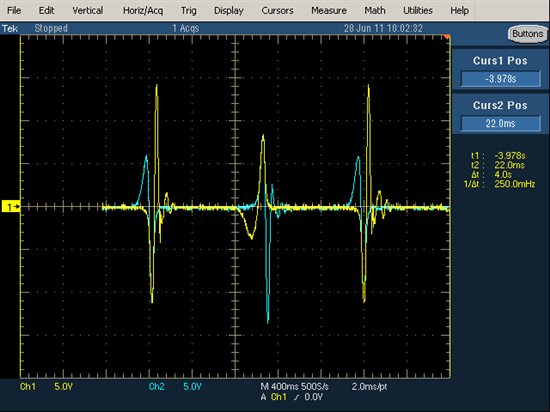hello there
For my project I need to power a MCU with super capacitors,three 3.3F 2.7V in serial connect
to charge the capacitors I have a AC power source looks like the yellow curve in the Fig, unstable and uncontinuous
How can I use this AC power source to charge capacitors, rectifier and buck-boost converter?
or Is the power management IC I can use


